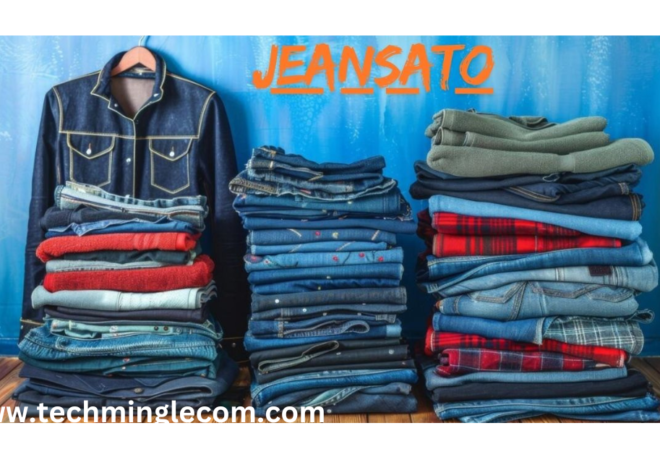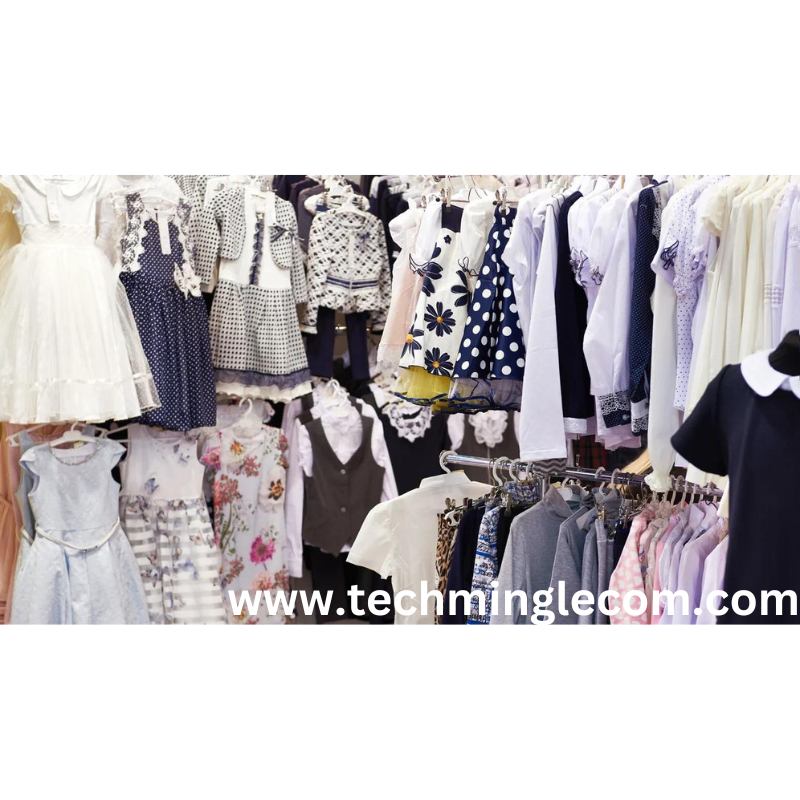
Kids Clothing:100% Stylish and Fun Kids’ Clothing
Introduction to Kids Clothing
Choosing the right clothing for your kids can sometimes feel like a Herculean task. Not only do you want them to look adorable, but you also need to ensure their comfort, safety, and functionality. In this article, we will delve into the world of kids’ clothing, exploring everything from different types to buying tips, popular brands, and even how to care for those tiny outfits.
Understanding Kids Clothing
Kids clothing encompasses a wide range of apparel specifically designed for children from infancy through adolescence. These clothes are tailored to meet the unique needs of growing children, balancing style, comfort, and durability.
Importance of Kids Clothing
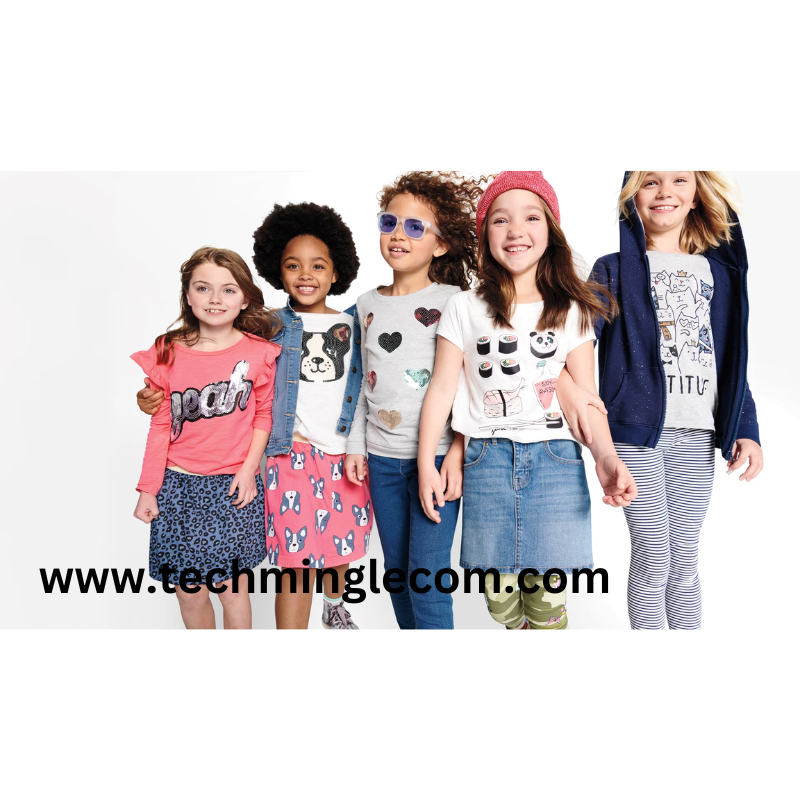
Comfort and Functionality
Kids are constantly on the move, and their clothing needs to keep up. Comfort is paramount, as uncomfortable clothes can hinder a child’s ability to play and learn. Functional clothing that allows for easy movement is essential for their daily activities.
Expression of Personality
Clothing is a powerful tool for self-expression, even for kids. Allowing children to choose their outfits helps them develop a sense of independence and personal style from a young age.
Types of Kids Clothing
Everyday Wear
Everyday wear is all about comfort and ease. It includes items like:
T-shirts and Jeans
Classic and versatile, T-shirts and jeans are a staple in any child’s wardrobe.
Dresses and Skirts
For a touch of femininity, dresses and skirts are perfect, especially for warm weather.
Shorts and Tops
Ideal for summer, shorts and tops keep kids cool and comfortable.
Formal Wear
Special occasions call for something a bit more polished.
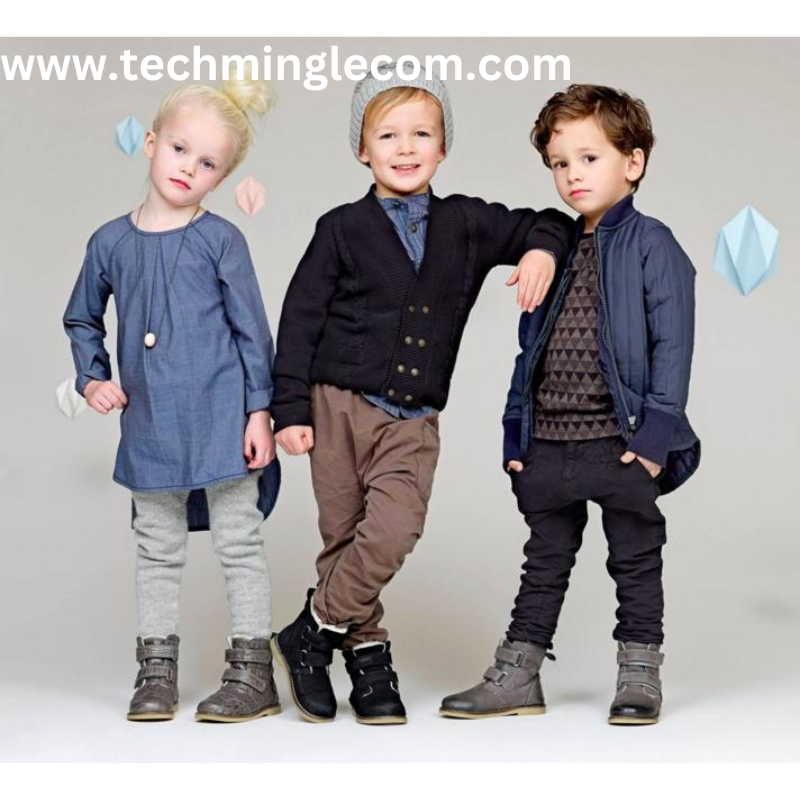
Suits and Dresses
Suits for boys and dresses for girls are the go-to for formal events.
Special Occasion Outfits
These include outfits for weddings, parties, and other significant events.
Seasonal Wear
Different seasons require different clothing.
Winter Clothing
Think cozy sweaters, jackets, and warm pants.
Summer Kids Clothing
Lightweight fabrics and breathable materials are key for summer.
Rainy Season EssentialsKids Clothing
Raincoats and waterproof boots are must-haves for the rainy season.
Sportswear
For the active kids, sportswear is essential.
Activewear
Designed for physical activity, activewear is both functional and stylish.
Swimwear
Whether for swimming lessons or beach trips, swimwear is a summer essential.
Ethical Considerations in Kids Clothing
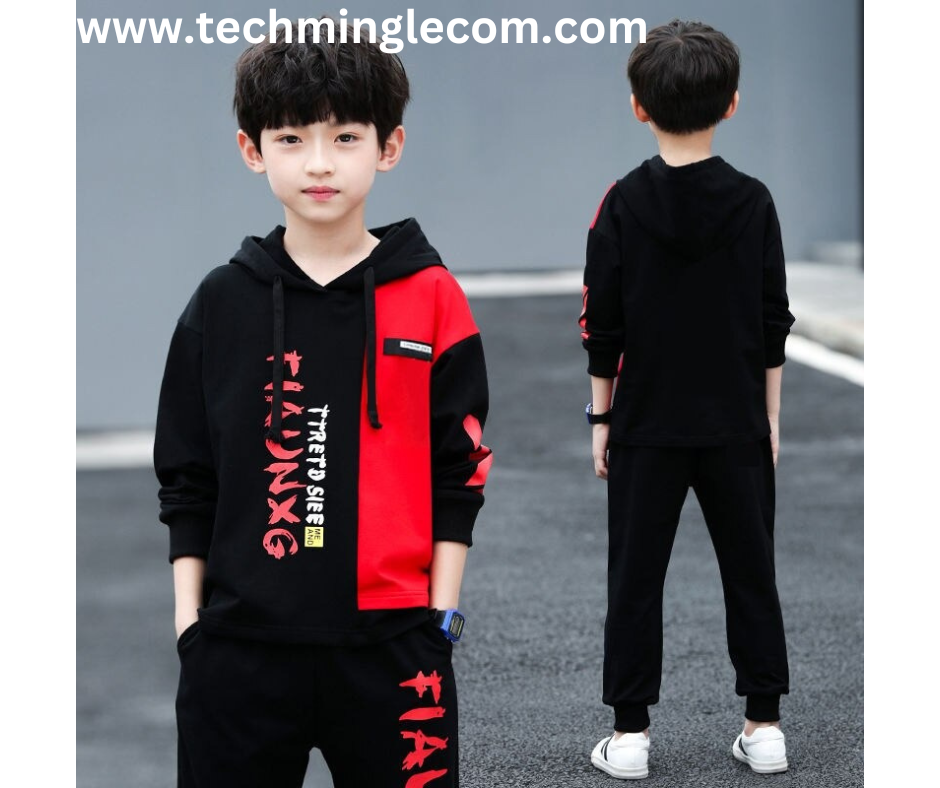
Sustainable Practices
In today’s world, the importance of sustainability has never been greater.. Many parents are opting for brands that prioritize eco-friendly practices, such as using organic cotton or recycled materials. Choosing sustainable clothing not only helps the environment but also sets a good example for our children.
Fair Trade
Fair trade clothing ensures that the people who make our kids’ clothes are treated fairly and paid a living wage. Supporting fair trade brands is a great way to promote ethical consumption.
Second-Hand and Upcycled Clothing
Buying second-hand or upcycled clothing is a fantastic way to reduce waste. There are plenty of thrift stores and online platforms where you can find high-quality, pre-loved kids’ clothes at a fraction of the price.
Customizing Kids Clothing
DIY Projects
Getting creative with DIY clothing projects can be a fun and rewarding way to customize your child’s wardrobe. Whether it’s adding patches, embroidering, or tie-dyeing, these projects can give old clothes new life and create unique pieces.
Personalized Clothing
Personalized clothing, such as T-shirts with your child’s name or favorite character, can make for special keepsakes. Many online stores offer customization options where you can design your own clothing.
Adapting Kids Clothing for Special Needs
Adaptive Clothing
For children with special needs, adaptive clothing can make a huge difference. These clothes are designed with features like magnetic closures, easy-open necklines, and sensory-friendly fabrics, providing comfort and independence.
Sensory-Friendly Clothing
Children with sensory processing issues often find standard clothing uncomfortable. Sensory-friendly clothing avoids tags, seams, and rough fabrics that can irritate sensitive skin.
Factors to Consider When Buying Kids Clothing
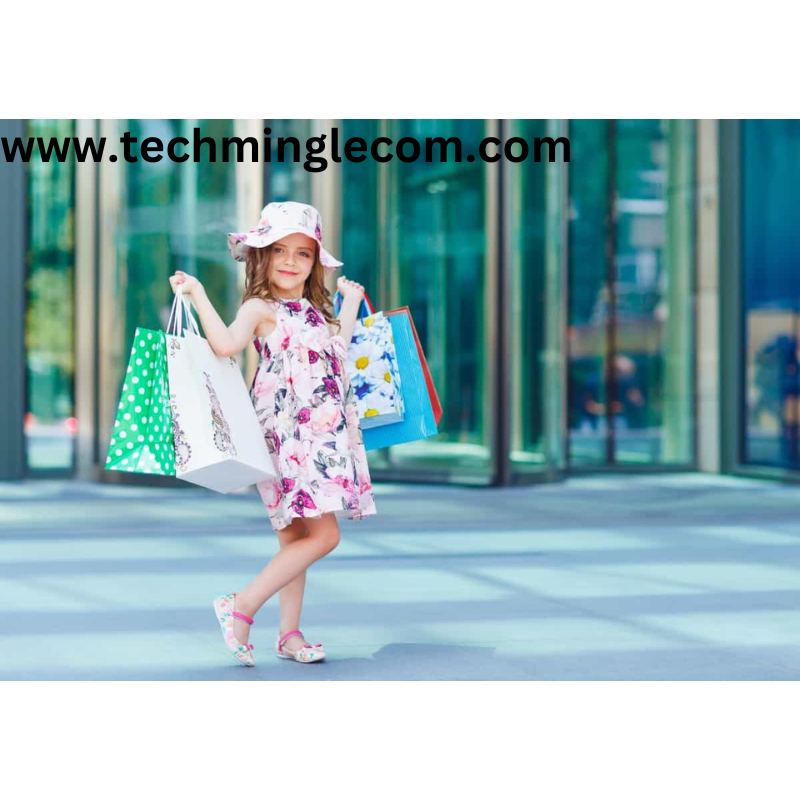
Material and Fabric
Opt for soft, breathable, and non-irritating fabrics.
Durability
Kids are rough on their clothes, so durability is a must. Look for sturdy fabrics and strong stitching.
Safety
Avoid clothes with small buttons, drawstrings, or other elements that could pose a choking hazard.
Price
While it’s tempting to buy the cheapest options, investing in quality pieces can save money in the long run due to their durability.
Popular Kids Clothing Brands
High-end Brands
Brands like Burberry and Ralph Lauren offer high-quality, stylish options, though they come with a higher price tag.
Affordable Brands
Brands like Carter’s and OshKosh B’gosh provide stylish and durable clothing at more affordable prices.
Trends in Kids Clothing
Sustainable Fashion
Eco-friendly fabrics and sustainable practices are becoming more popular in kids’ fashion.
Gender-neutral Clothing
Breaking away from traditional gender norms, many brands now offer gender-neutral clothing lines.
Technology in Clothing
From UV protection to moisture-wicking fabrics, technological advancements are making kids’ clothing more functional than ever.
Tips for Choosing Kids Clothing
Understanding Your Child’s Preferences
Involve your child in the shopping process to ensure they like and will wear the clothes.
Shopping Tips
Look for sales and discounts, and consider buying off-season for the best deals.
Where to Buy Kids Clothing
Online Stores
Online shopping offers convenience and a wider selection. Popular online retailers include Amazon, Zara, and H&M.
Physical Stores
For those who prefer to see and feel the clothes before buying, stores like Target and Walmart are great options.
Seasonal Shopping Tips for Kids Clothing
Off-Season Bargains
One of the best ways to save money on kids’ clothing is to shop off-season. Buy winter coats in the summer and swimsuits in the winter to take advantage of clearance sales.
Preparing for Seasonal Changes
Stock up on essentials like raincoats and boots before the rainy season starts, or buy warm jackets before the first cold snap hits. Planning ahead ensures you’re always prepared and can avoid last-minute, often more expensive, purchases.
Building a Capsule Wardrobe for Kids
Benefits of a Capsule Wardrobe
A capsule wardrobe, which includes a limited number of versatile and high-quality pieces, can simplify getting dressed and reduce clutter. It focuses on items that can be mixed and matched to create multiple outfits.
Involving Kids in Clothing Choices
Empowering Kids
Letting children choose their own clothes can empower them and boost their confidence. It also helps them develop their own sense of style and independence.
Guiding Choices
While it’s great to let kids have a say, it’s also important to guide them towards practical and appropriate choices. Give them options that you’ve pre-approved to ensure they stay within your budget and needs.
The Future of Kids Clothing: Trends and Innovations
The kids’ clothing industry is rapidly evolving, driven by changing consumer preferences, technological advancements, and a growing focus on sustainability. Here are some key trends and innovations shaping the future of kids’ clothing:
Sustainable and Ethical Fashion
As a result, there is a growing demand for sustainable and ethically produced kids’ clothing. Brands are responding by using organic fabrics, recycled materials, and eco-friendly dyes. Companies like Patagonia and Mini Rodini are leading the way by offering collections that are both stylish and environmentally friendly.
Smart Clothing
The integration of technology into kids’ clothing is another exciting development. Smart clothing, embedded with sensors and connectivity features, can monitor a child’s health, activity levels, and even provide location tracking. These garments offer parents peace of mind and add a layer of safety. For example, brands like Owlet and Sensoria are developing smart wearables that track vital signs and sleep patterns.
Personalization and Customization
Customization is becoming a significant trend in kids’ clothing. Parents and children can now design their clothes, choosing from various colors, patterns, and styles to create unique outfits. This trend not only makes shopping fun but also allows children to express their individuality. Brands like Nike and Adidas offer customization options that cater to the unique preferences of young customers.
Gender-Neutral Fashion
The movement towards gender-neutral clothing is gaining momentum. Parents are increasingly looking for versatile, unisex clothing that breaks away from traditional gender norms. This trend is reflected in the rising popularity of brands like Tootsa and Wildly Co., which offer gender-neutral collections that appeal to a broad audience.
Adaptive Clothing
Inclusive fashion is becoming more prominent, with a focus on adaptive clothing designed for children with disabilities. These garments are easy to wear and remove, featuring magnetic closures, adjustable waistbands, and sensory-friendly fabrics.
Augmented Reality (AR) Shopping Experiences
Augmented reality is transforming the shopping experience for kids’ clothing. AR apps allow parents and children to virtually try on clothes before purchasing, making online shopping more interactive and accurate. This technology helps reduce the number of returns and enhances customer satisfaction. Brands like Zara and Gap are investing in AR to create engaging shopping experiences.
Fast Fashion vs. Slow Fashion
While fast fashion remains popular due to its affordability and trendiness, there is a growing shift towards slow fashion in the kids’ clothing market. Slow fashion emphasizes quality over quantity, promoting durable, timeless pieces that can be handed down or resold. Brands like Hanna Andersson and Boden are champions of this movement, offering high-quality clothing that lasts.
Subscription Boxes
Subscription boxes for kids’ clothing are becoming increasingly popular. These services deliver curated outfits to customers’ doorsteps, offering convenience and a personalized shopping experience. Companies like Stitch Fix Kids and Kidbox provide tailored selections based on a child’s style preferences and size, making shopping hassle-free for busy parents.
Caring for Kids Clothing
Washing Tips
Follow the care labels to keep clothes looking their best.
Stain Removal
Kids are messy, so knowing how to treat stains is essential. Pre-treat stains before washing.
Storage Solutions
Proper storage can extend the life of clothes. Fold or hang them properly to avoid wrinkles and damage.
Conclusion
Choosing the right clothes for your kids is more than just a matter of style; it’s about comfort, functionality, and safety. By considering factors like size, material, and durability, you can ensure your child is well-dressed for any occasion. Happy shopping!
FAQs
How often should I buy new clothes for my child?
It depends on their growth rate, but generally, every few months to a year.
What are the best fabrics for kids’ clothing?
Cotton is a top choice for its softness and breathability.
How can I save money on kids’ clothing?
Look for sales, buy off-season, and consider hand-me-downs.
Are hand-me-downs a good option?
Yes, if they are in good condition and fit well.
How do I know if a clothing brand is safe for my child?
Check for certifications, read reviews, and avoid clothes with small, detachable parts.


